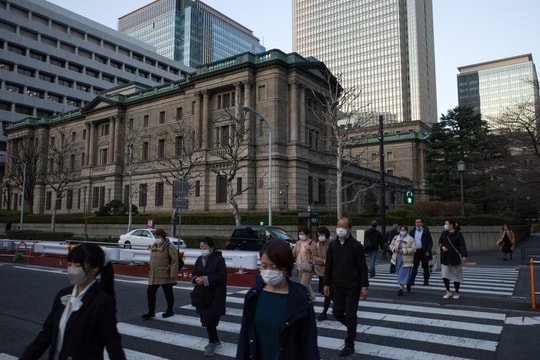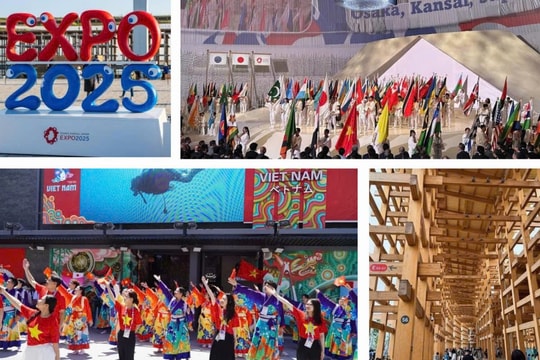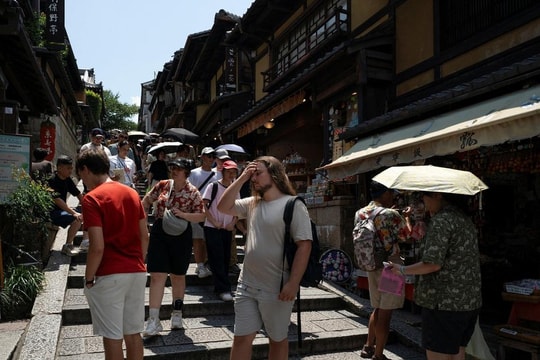Five years after the earthquake and tsunami, the Japanese government and people have spent hundreds of billions of dollars with the goal of rebuilding the country within 10 years.
 |
| According to CBC, five years ago today, Japan suffered the largest earthquake in its history. The magnitude 9.0 earthquake off the northeastern coast of Japan triggered a tsunami that swept far inland, submerged several cities and caused a radiation leak crisis at the Fukishima Daiichi nuclear power plant. Natori City in Miyagi Prefecture on March 11, 2011 (above) and on February 15, 2016 (below). |
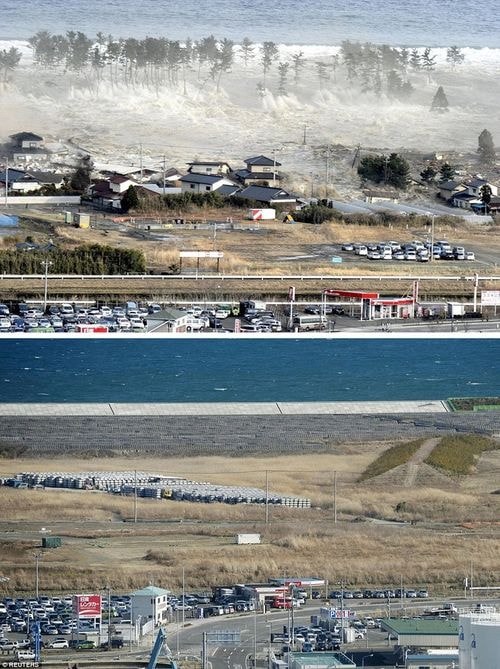 |
| Natori, once a bustling city of 74,000, was completely wiped out by the force of 10-meter-high tsunami waves (above). Flooded areas and ruined houses have now given way to empty, desolate wastelands (below). |
 |
| Kesennuma City in Miyagi Prefecture on March 12, 2011 (left) and on February 16, 2016 (right). The earthquake and tsunami left 16,000 dead, 2,500 missing and more than 150,000 homeless. The Japanese government and people continue to make efforts to rebuild the country. |
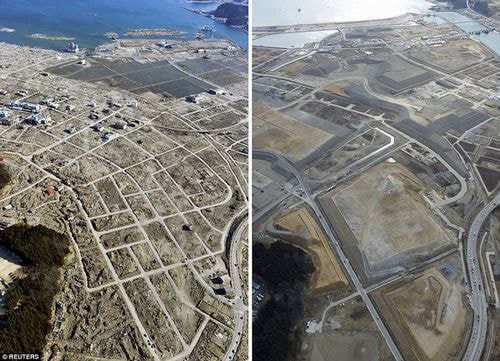 |
| Riuentakata City in Iwate Prefecture in 2011 (left) and now (right). The disaster killed 18,000 people in the city and destroyed homes and roads. |
 |
| Naraha, a town near the Fukushima nuclear power plant, was forced to evacuate its entire population after the disaster (above). The town's 7,400 residents left their hometown four and a half years after the disaster. It wasn't until October 2015 that the Japanese government lifted the ban, allowing residents to return to Naraha for the first time. The government said radiation levels in Naraha had dropped to safe levels after years of decontamination. However, about 100,000 people in 10 municipalities around the plant still can't return home. |
 |
| Shinchi Town, Fukushima Prefecture in 2011 (left) and now (right). Decontamination is expected to take decades, at a cost of up to 25.7 billion USD. In addition, Japan also established the Reconstruction Agency in 2012, operating for 10 years, with a staff of 600 people based in Tokyo and offices in heavily damaged provinces. The budget for reconstruction is 250 billion USD for the first 5 years of reconstruction, the period 2011-2015 and another 65 billion USD for the period 2016-2020. According to MB, as of November 2015, at least 74% of agricultural land had been restored, 85% of seafood processing facilities had reopened. 90% of school and medical facilities had been restored, and at least 14,000 public houses for people in disaster areas had been completed. |
Video documentary about the disaster in Japan in 2011
.
According to VNE








